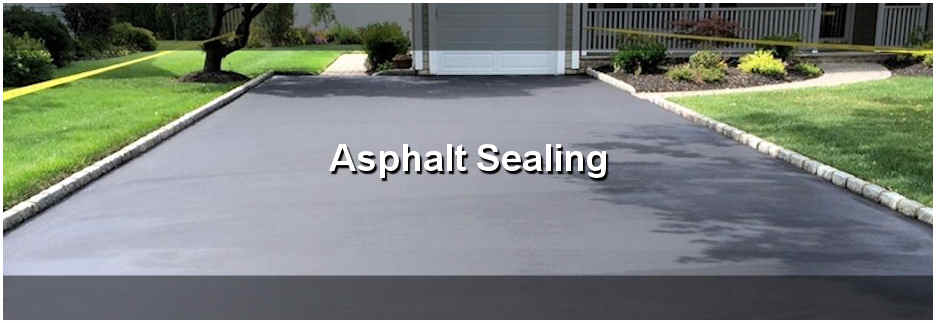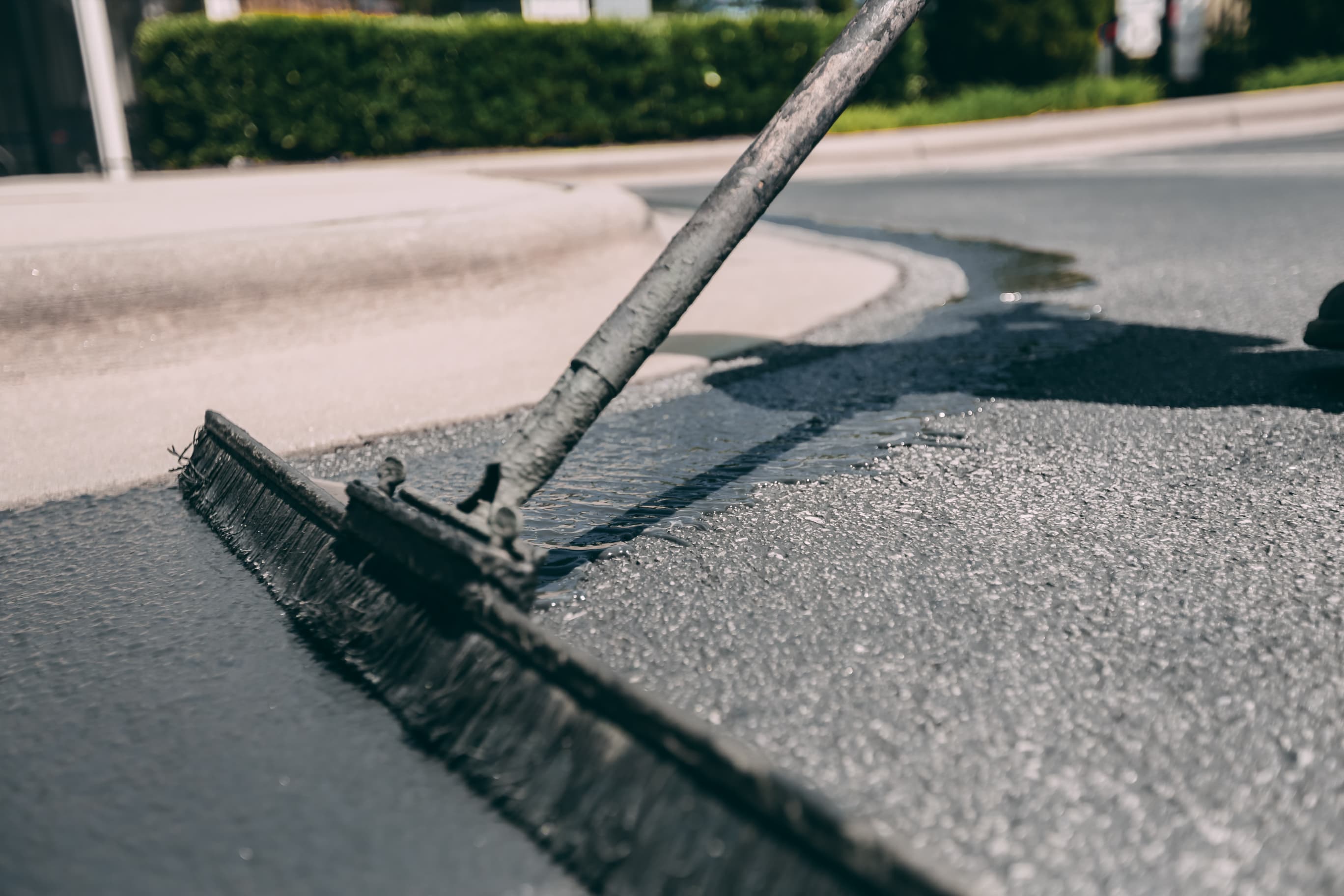Let loose the Possible: Regrading and Asphalt Sealing for Business Rooms
Let loose the Possible: Regrading and Asphalt Sealing for Business Rooms
Blog Article
Hot Mix Asphalt: A Lasting Option for Pavement
Warm Mix Asphalt (HMA) has actually emerged as a leading lasting option for pavement solutions, using a myriad of ingenious technologies and environmental advantages. Its ability to reduce and recycle products energy intake provides an engaging instance for its adoption in roadway building and construction projects. The long-term performance and longevity of HMA make it a favored choice for infrastructure advancement. As the need for environmentally friendly building and construction techniques grows, exploring the subtleties of HMA's sustainability can give useful understandings right into the future of sidewalk options.
Ecological Advantages of Warm Mix Asphalt

Additionally, Warm Mix Asphalt assists to reduce city warm island results. Its dark color takes in sunshine, minimizing the amount of warm mirrored back into the atmosphere contrasted to lighter-colored sidewalks. This can lower ambient temperature levels in city locations, decreasing the need for air conditioning and eventually reducing energy intake.
In enhancement, Warm Mix Asphalt contributes to boosted stormwater monitoring. Its porous nature allows water to infiltrate the pavement and reenergize groundwater supplies, decreasing drainage and the danger of flooding. These environmental benefits make Warm Mix Asphalt a sustainable choice for leading roads and freeways.
Power Effectiveness in HMA Production
Is power effectiveness a crucial factor in the production of Warm Mix Asphalt (HMA)? Energy plays a substantial role in the production of HMA, impacting both expense and ecological sustainability. One vital element of power performance in HMA manufacturing is the use of warm mix asphalt (WMA) innovations.
In addition, innovations in plant modern technologies have actually resulted in even more energy-efficient HMA manufacturing procedures. Modern plants are created with attributes like recycled asphalt pavement (RAP) processing abilities, reliable burner systems, and improved insulation, all adding to energy cost savings. By maximizing energy use in HMA manufacturing, the industry can lower its carbon footprint while keeping top quality sidewalk materials. Energy effectiveness is, for that reason, a crucial factor to consider in ensuring the sustainability of Hot Mix Asphalt production.
Recyclability of Hot Mix Asphalt
The recyclability of Warm Mix Asphalt (HMA) is an essential element of its sustainability and lasting environmental effect. HMA is one of the most recycled products in the United States, with over 100 million bunches of recovered asphalt pavement (RAP) being recycled annually in new pavement construction. Recycling HMA supplies a number of ecological benefits, such as reducing the need for virgin products, lowering power usage throughout manufacturing, and decreasing the amount of waste sent out to garbage dumps.
The procedure of recycling HMA includes milling the existing sidewalk, crushing it right into smaller items, and blending it with new accumulation and asphalt binder to develop a recycled mix. This recycled mix can often perform along with or even better than conventional HMA, while needing fewer resources and generating reduced greenhouse gas discharges. By including RAP into brand-new sidewalk jobs, road firms can save natural deposits, decrease expenses, and lessen the ecological impact of road building and construction and maintenance activities. Overall, the recyclability my blog of HMA plays a considerable role in promoting lasting practices within the pavement market.

Long-Term Performance of HMA
Asphalt pavements demonstrate resilience and strength over an extensive period, mirroring the long-lasting performance of Warm Mix Asphalt (HMA) The longevity of HMA can be credited to its capacity to withstand heavy web traffic lots, harsh weather problems, and the results of aging. Researches have actually shown that properly designed and correctly constructed HMA sidewalks can last for 20 years or more with regular upkeep. The secret to making the most of the long-term efficiency of HMA hinges on making use of high-grade products, following ideal techniques in construction, and carrying out reliable maintenance approaches. Proper water drainage, regular assessments, and prompt repairs are necessary for preserving the structural stability of HMA pavements over time. In addition, developments in HMA technology, such as using official site polymer-modified binders and cozy mix asphalt, have even more boosted the toughness and longevity of HMA sidewalks. By prioritizing high quality building and construction and upkeep methods, HMA proceeds to show itself as a sustainable and economical service for resilient sidewalk facilities.

HMA: Toughness and Sustainability
Showing both durability and sustainability, Hot Mix Asphalt (HMA) has become a cornerstone in the building of durable sidewalk facilities - angled parking. HMA's durability comes from its capability to endure hefty loads, severe climate condition, and high website traffic quantities, making it a trusted selection for highways, highways, and airport terminal runways. The composition of HMA, which normally consists of aggregates, binder, and filler, plays a crucial duty in boosting its long life and resistance to tear and put on
Moreover, HMA's sustainability hinges on its recyclability and energy-efficient manufacturing process. The capacity to recycle recovered asphalt pavement (RAP) in new HMA combinations lowers the demand for virgin products and reduces the environmental impact of sidewalk building and construction and maintenance. In addition, the power effectiveness of generating HMA depends on its reduced mixing temperatures compared to various other pavement products, resulting in minimized power intake and greenhouse gas exhausts.
Verdict
In conclusion, warm mix asphalt (HMA) offers a lasting remedy for sidewalk with its eco pleasant attributes. HMA's recyclability, power efficiency in production, and long-lasting durability make it an environmentally friendly selection for road building and construction.
HMA is one why not check here of the most recycled products in the United States, with over 100 million loads of recovered asphalt sidewalk (RAP) being recycled each year in brand-new pavement construction.The process of recycling HMA involves crushing the existing sidewalk, crushing it into smaller sized pieces, and blending it with new accumulation and asphalt binder to produce a recycled mix.Asphalt pavements show sturdiness and resilience over a prolonged period, showing the long-term efficiency of Hot Mix Asphalt (HMA) Furthermore, advancements in HMA modern technology, such as the use of polymer-modified binders and warm mix asphalt, have further improved the durability and durability of HMA sidewalks. The ability to recycle redeemed asphalt pavement (RAP) in new HMA blends reduces the demand for virgin products and minimizes the environmental effect of pavement building and upkeep.
Report this page